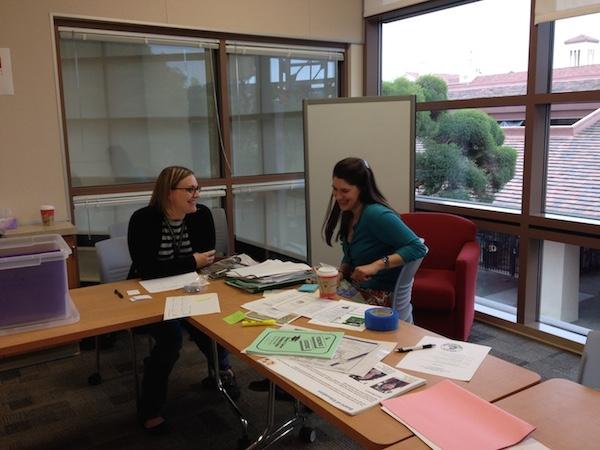Palo Alto High School departments are strategizing after Western Association of Schools and Colleges Coordinator Emily Garrison released the results of Paly’s WASC self-study report to the Site Council last Monday.
On Tuesday, the report was presented to the Palo Alto Unified School District’s Board.
As part of the six-year WASC cycle, which starts fall 2015, teachers and administrators must discuss changes they will make to Paly curriculum, schedules and policies to achieve the targets Garrison announced in October. The staff’s assessment has produced three goals for Paly’s next cycle: systems alignment, student engagement and innovation.

“One of the things that we were looking at was making sure that these were smart goals: achievable, relevant, time-bound,” Prinicipal Kim Diorio said at the site council meeting. “It’s really important that we look at the system that is supporting what we’re doing and try and improve it.”
The new strategies revealed at the meeting include developing summative assessments, Common Core standards and positive learning communities. Diorio also says she hopes these strategies will reform the vision and culture of the school into one that prioritizes students’ choices and voices.
“Our school isn’t involved in the process of drafting the School District’s mission statement, so for some people [at Paly] they’re just words written on a paper,” Diorio said at the meeting. “Our goal is to make this what we’re living, what we’re about, so we all have that feeling of working together and moving forward together.”
To draft the report, Garrison enlisted the help of parents, students and focus groups, as well as the WASC Leadership Team and PTSA. She interviewed several hundred students and staff in all departments to determine the concentration of the study.
“I am so proud of the dedication, heart and thought that has gone into this,” Garrison said. “It’s not easy … but departments are already starting [to implement the WASC strategies]. They’re so excited. Thank you to everyone who contributed to this process.”
Paly parent and PTSA member Srinivasan Subramaniam predicted that parents will approve of the strategies the WASC team created for better school-parent communication.
“I especially liked how the report mentioned parents being involved and a partnership,” Subramaniam said. “The report said the learning experience is evolving, and as parents, we don’t want to be left out.”
One problem WASC has not targeted with a specific strategy is truancy, which is defined as three or more unexcused absences. The WASC report’s analysis of the California Healthy Kids Survey showed that truancy rates increase throughout high school as “84 percent of freshmen report never being truant, but only 47 percent of juniors report the same.”
Diorio claims this phenomenon, as well as other trends like Paly’s racial achievement gap, will decrease through implementation of WASC strategies and modification of Paly’s vision.
“It’s the ripple effect,” Diorio said. “Our actions can have an effect on the greater good of our schools’ system.”
Diorio ended the Site Council meeting on a cautiously optimistic note.
“This is a very ambitious plan, and if we don’t find the time to start working on it and taking some small steps, we’re not going to achieve our dreams,” Diorio said.
Garrison seconded Diorio’s opinion. For now, Garrison plans on continuing her assessment of Paly’s system and working with departments to achieve WASC goals, but she expects the report will grow to include more analysis.
“We have very lofty goals, and we’re just going to go for it and see how far we get,” Garrison said. “Looking at data always leads you to more questions.”

